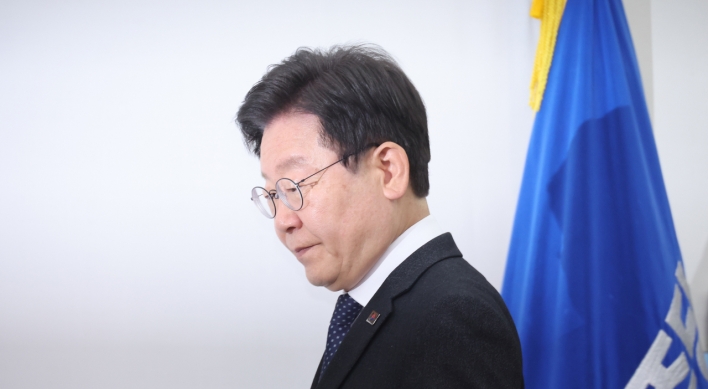[Editorial] Gray Korea
Fewer working-age people support elderly
By Korea HeraldPublished : July 24, 2014 - 20:57
As Korean society ages at one of the world’s fast paces, few demographic figures regarding the low birthrate and the ever-increasing elderly population still surprise us. Yet, the latest statistics from the OECD should be a cause for concern.
According to the latest old-age support rates released by the Organization for Economic Cooperation and Development, 5.26 Koreans of working age are supporting one older person this year. This is projected to go down to 1.96 in 2036.
The old-age support rates measure the number of those capable of providing economic support, aged 20 to 64, to the number of seniors, aged 65 and older, who may be financially dependent on outside support.
Not surprisingly, the rates have been declining rapidly in recent years ― from 15.79 in 1950, to 9.83 in 1997 and 5.26 this year. They are projected to drop further in the coming years ― to 4.94 in 2016, 3.81 in 2022 and 2.89 in 2027 and to 1.96 in 2036. This means fewer than two people will have to support one elderly person in 22 years of time.
It is not a coincidence that the OECD projects that Korea’s growth potential will drop in the coming years, to 2.4 percent after 2018. The steady decline of working-age people per senior will certainly deprive the economy of vitality.
There is no doubt that the low birthrate and fast aging are primarily to blame for the rapid decline of the old age support rates. Korea’s fertility rate of 1.19 is the lowest among the 34 OECD member states.
One of the first things to do to curb the downfall of the old-age support rates is to boost the birthrate by comprehensively dealing with major factors affecting childbirth and marriage, including job security, child care and rearing, education costs, housing, and the attitude toward the family system.
At the same time, policy measures should focus on helping more elderly stand on their own economically. This is all the more important because Korea’s elderly poverty rate stands at 49 percent, the highest in the OECD.
Senior citizens who are healthy, educated and willing to work into an advanced age should be brought into the workforce. In this sense, it is encouraging to hear that more elderly are employed than ever.
The number of workers aged 60 or older increased to 3.643 million in the second quarter, a rise of 192,000 from the same period a year ago. This is 29,000 more than the increase in the 20s age group. While this may reflect the tight job market today’s youth face in landing jobs, the growth of the elderly working population should be encouraged.
According to the latest old-age support rates released by the Organization for Economic Cooperation and Development, 5.26 Koreans of working age are supporting one older person this year. This is projected to go down to 1.96 in 2036.
The old-age support rates measure the number of those capable of providing economic support, aged 20 to 64, to the number of seniors, aged 65 and older, who may be financially dependent on outside support.
Not surprisingly, the rates have been declining rapidly in recent years ― from 15.79 in 1950, to 9.83 in 1997 and 5.26 this year. They are projected to drop further in the coming years ― to 4.94 in 2016, 3.81 in 2022 and 2.89 in 2027 and to 1.96 in 2036. This means fewer than two people will have to support one elderly person in 22 years of time.
It is not a coincidence that the OECD projects that Korea’s growth potential will drop in the coming years, to 2.4 percent after 2018. The steady decline of working-age people per senior will certainly deprive the economy of vitality.
There is no doubt that the low birthrate and fast aging are primarily to blame for the rapid decline of the old age support rates. Korea’s fertility rate of 1.19 is the lowest among the 34 OECD member states.
One of the first things to do to curb the downfall of the old-age support rates is to boost the birthrate by comprehensively dealing with major factors affecting childbirth and marriage, including job security, child care and rearing, education costs, housing, and the attitude toward the family system.
At the same time, policy measures should focus on helping more elderly stand on their own economically. This is all the more important because Korea’s elderly poverty rate stands at 49 percent, the highest in the OECD.
Senior citizens who are healthy, educated and willing to work into an advanced age should be brought into the workforce. In this sense, it is encouraging to hear that more elderly are employed than ever.
The number of workers aged 60 or older increased to 3.643 million in the second quarter, a rise of 192,000 from the same period a year ago. This is 29,000 more than the increase in the 20s age group. While this may reflect the tight job market today’s youth face in landing jobs, the growth of the elderly working population should be encouraged.
-
Articles by Korea Herald





![[Herald Interview] 'Amid aging population, Korea to invite more young professionals from overseas'](http://res.heraldm.com/phpwas/restmb_idxmake.php?idx=644&simg=/content/image/2024/04/24/20240424050844_0.jpg&u=20240424200058)












![[KH Explains] Korean shipbuilding stocks rally: Real growth or bubble?](http://res.heraldm.com/phpwas/restmb_idxmake.php?idx=652&simg=/content/image/2024/04/25/20240425050656_0.jpg&u=)

